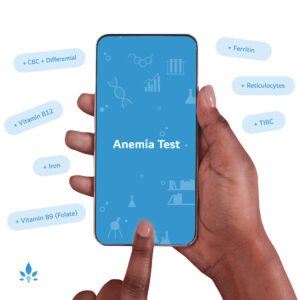How is Measles Spread?


In January 2015, the Centers for Disease Control and Prevention (CDC) reported 102 patients in 14 states have been diagnosed with measles. This comes on the heels of a record-setting 2014, where 644 cases in 27 states were reported. This represents the most measles cases reported to the CDC since measles was considered virtually eradicated in 2000.
Measles is a virus that initially causes cold-like symptoms, including cough, fever, runny nose, and watery eyes. A red rash that often starts on the face and spreads to the rest of the body will also develop. Measles also can cause white spots on the insides of the cheeks, known as Koplik spots. When a person is infected with measles, the virus lives in the nose and throat. If a person infected with measles coughs, talks, or sneezes, the droplets from their saliva transmit into the air.
The effects of measles can range in severity. While not all patients experience the worst symptoms, some vulnerable patients will develop pneumonia and/or encephalitis, which is a condition that causes brain inflammation. Severe infections can be fatal, especially for small patients whose immune systems may not be strong enough to fight off the virus.
Anyone who comes in contact with the infected person can breathe in the droplets, which live for up to two hours in the airspace where the person has coughed or sneezed. Also, the droplets can live on infected surfaces for up to two hours. This means long after a person has sneezed on a table or touched a doorknob, another person could touch the same surface and come down with measles.
Unfortunately, measles can take anywhere from 7-21 (average 10-12) days to develop after a person has been exposed. Some facts about the spread of measles include:
According to the New York State Department of Health, a person can spread measles four days prior to developing a rash and four days after.
According to the CDC, if one person has measles, 90 percent of people near the infected person who are not immune to measles will get measles.
Those at risk for the measles include people who have never been vaccinated against the disease, babies younger than 12 months of age who are not yet old enough to be vaccinated, and those vaccinated before 1968, as these vaccinations were not strong enough to last.
According to the CDC, measles is considered one of the most contagious viral diseases currently known.
How is measles prevented?
The measles, mumps, and rubella (MMR) vaccine is considered one of the best ways to prevent measles. The vaccine is given when a child is between 12-15 months of age. A second dose is given when a child is between 4-6 years of age.
In addition to receiving the vaccinations, it is important that infected patients are kept away from the general public—such as work or school—during the times they are infectious. If a person has knowingly been exposed to measles and has not received the vaccine, there are two options for prevention. These include receiving a different vaccination type known as immune globulin (IG) given within six days of exposure, or the measles vaccine itself can be given within 72 hours of known exposure.
If you suspect you or a loved one has the measles or came in contact with someone with measles and have not been vaccinated, seek immediate medical attention.
Sources:
- ABC News
- US Measles Outbreak Growing, CDC Says.
Centers for Disease Control and Prevention - Measles Cases and Outbreaks.
Centers for Disease Control and Prevention - Transmission of Measles.
New York State Department of Health - Measles (Rubeola, Hard Measles, Red Measles).
New York Times - As Measles Cases Spread in U.S., So Does Anxiety.
Vermont Department of Health - Facts About Measles.
Powered by Bundoo®













































